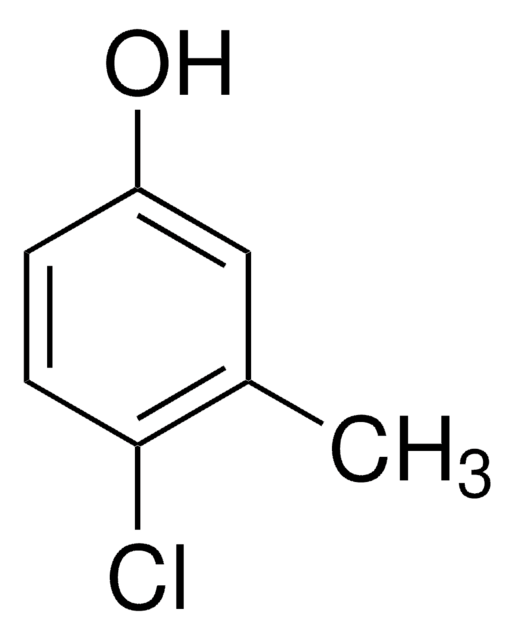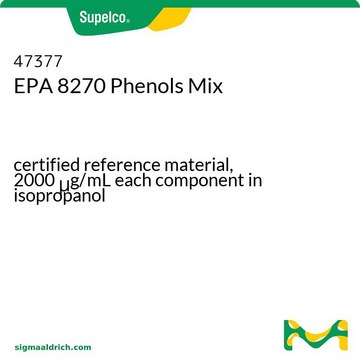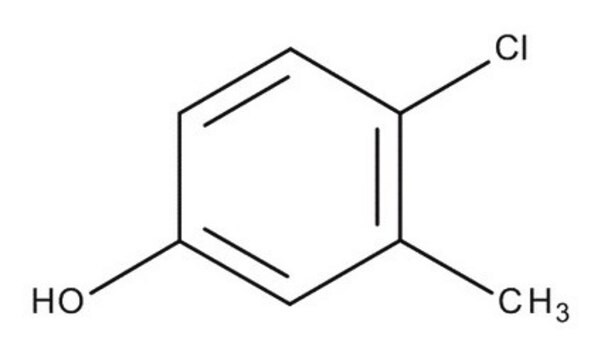24940
4-Chloro-3-methylphenol
≥98.0% (HPLC)
Sinónimos:
4-Chloro-m-cresol, PCMC
About This Item
Productos recomendados
Quality Level
assay
≥98.0% (HPLC)
form
pellets
bp
235 °C (lit.)
mp
63-65 °C (lit.)
solubility
methanol: soluble 1 g/10 mL, clear, colorless
water: soluble
SMILES string
Cc1cc(O)ccc1Cl
InChI
1S/C7H7ClO/c1-5-4-6(9)2-3-7(5)8/h2-4,9H,1H3
InChI key
CFKMVGJGLGKFKI-UHFFFAOYSA-N
¿Está buscando productos similares? Visita Guía de comparación de productos
General description
Application
signalword
Danger
hcodes
Hazard Classifications
Acute Tox. 4 Oral - Aquatic Acute 1 - Aquatic Chronic 3 - Eye Dam. 1 - Skin Corr. 1C - Skin Sens. 1B - STOT SE 3
target_organs
Respiratory system
Storage Class
6.1A - Combustible acute toxic Cat. 1 and 2 / very toxic hazardous materials
wgk_germany
WGK 2
flash_point_f
244.4 °F - closed cup
flash_point_c
118.0 °C - closed cup
ppe
dust mask type N95 (US), Eyeshields, Faceshields, Gloves
Elija entre una de las versiones más recientes:
¿Ya tiene este producto?
Encuentre la documentación para los productos que ha comprado recientemente en la Biblioteca de documentos.
Nuestro equipo de científicos tiene experiencia en todas las áreas de investigación: Ciencias de la vida, Ciencia de los materiales, Síntesis química, Cromatografía, Analítica y muchas otras.
Póngase en contacto con el Servicio técnico









